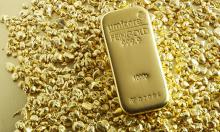Two die in Moscow after eating watermelon stuffed with ethylene glycol
On Friday, September 10th, three people were hospitalized in Moscow after they ate a watermelon from a local grocery store of the Magnet retail chain. The grandmother and her granddaughter died, the condition of another woman was stabilized. Later, the number of those people who suffered from watermelon poisoning increased to eleven.
It became known that traces of ethylene glycol were found in the blood of the victims. This substance is used as an ingredient in the production of brake fluids, glass cleaners and antifreezes.
Ethylene glycol is a dangerous chemical, the consumption of which, even in small quantities, can lead to severe poisoning and death. However, specialists say that the chemical may lead to a lethal outcome only if taken with food or tap water.
Incidents, in which one may accidentally poison themselves with this substance in everyday life can hardly be possible, as the chemical has a peculiar highly unpleasant odor.
As for the fears of the population about the ingress of ethylene glycol into the tap water, this theory does not seem to be convincing either as people would smell the contaminated water. In addition, one would have to contaminate the water supply system with a huge amount of ethylene glycol so that its aqueous solution could provoke serious poisoning in humans. The same can be said about the treatment of watermelons or other berries, fruits and vegetables with contaminated water.
Professor Leonid Voskresensky, the chief of the Department of Organic Chemistry at the Peoples' Friendship University of Russia, said that ethylene glycol found in the blood of those who died as a result of watermelon poisoning was unlikely to have been applied to watermelons and gourds. The source of the poison should not be sought in fruits, the chemist told lenta.ru publication.
"Ethylene glycol in a watermelon is like science fiction. This compound is used as antifreeze and brake fluid for cars, it is also used as a solvent, although rarely," the specialist said.
Ethylene glycol belongs to the third class of toxic substances. The question of how ethylene glycol could find itself inside a watermelon remains open.
It is believed that employees of the grocery store, where the watermelon was purchased, had used the chemical to sanitise the store. Representatives of the Magnit chain said that they were conducting an investigation into the incident and promised to remove the products from the last supplied batch from stores of the entire chain.
The Investigative Committee opened a criminal case under article "Provision of services that do not meet safety requirements and resulted in the death of a person by negligence."
Subscribe to Pravda.Ru Telegram channel, Facebook, RSS!




